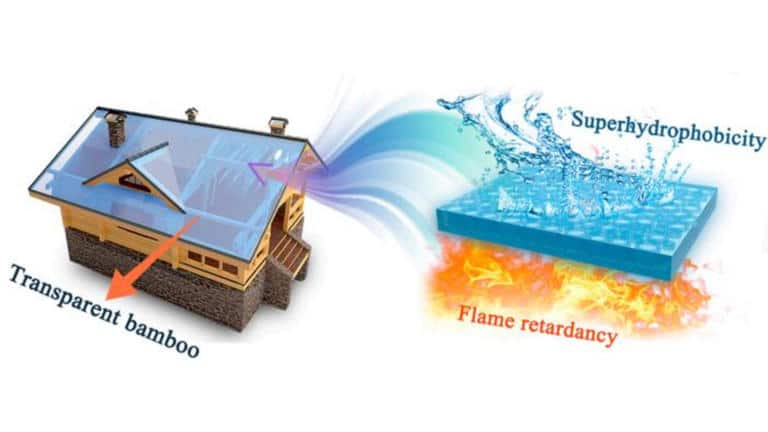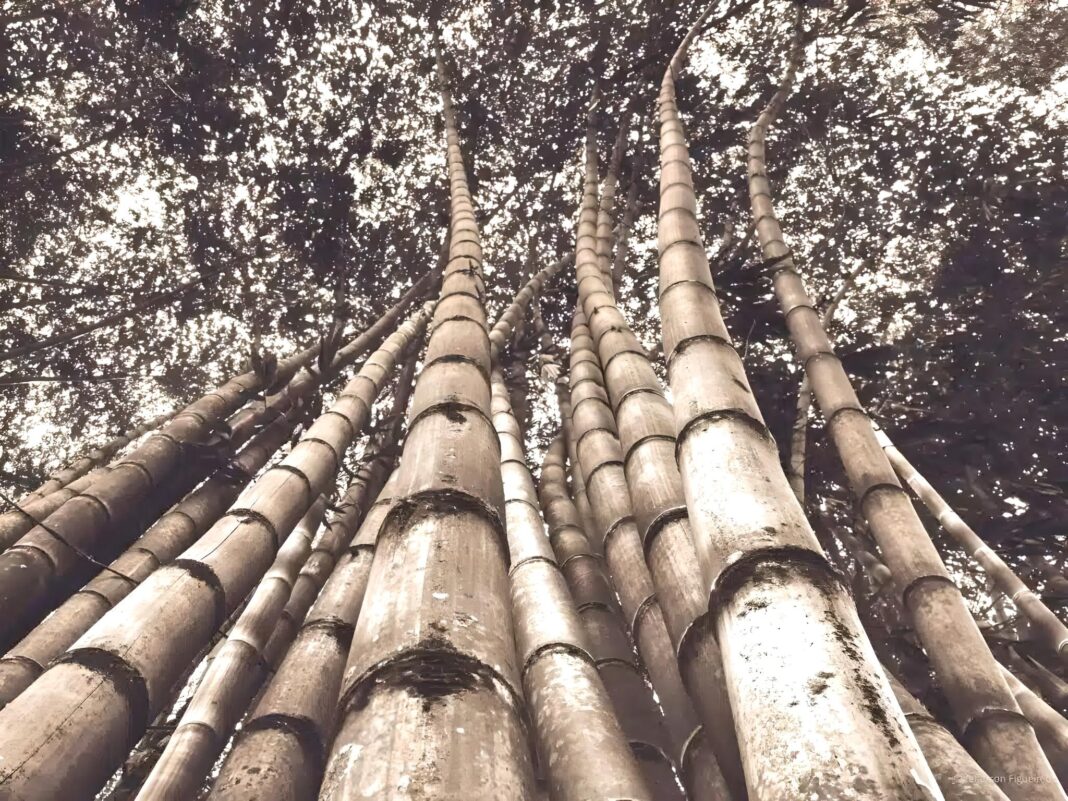Chinese scientists are turning bamboo into fire-proof glass, creating an eco-friendly alternative to silica glass. Unlike transparent wood, glass is fully resistant to fire and water and suppresses smoke.
Now, scientists are exploring how transparent bamboo can be used in future materials, investing in fabrication and multi-functionalisation to drive its uptake in building supply chains in China and worldwide.
The findings come from a suite of research commissioned by the Chinese government, which is heavily pushing bamboo as a low-carbon building material and carried out by the Central South University of Forestry and Technology (CSUFT).
For several years, transparent wood – where scientists remove lignin from wood fibres and then treat the material with plexiglass or epoxy – has been pushed by material scientists as an alternative to silica glass – which is hugely carbon intensive, heavy and brittle. Part of the next generation of wood products, beyond timber and paper, not only is it stronger than silica glass, but it is also lighter and has better thermal insulation.
However, whilst transparent wood has several advantages, it has some drawbacks. Namely, it’s flammability – thanks to the polymers needed to make it transparent, which makes it highly susceptible to fire as well as a major scarcity in primary resource – with the FAO predicting that global demand for wood products will grow fourfold over the next 30 years. And it is this scarcity that has pushed Chinese researchers to look to bamboo to create a better “fit for purpose” alternative than transparent wood.

According to Caichao Wan, lead researcher at CSUFT’s College of Materials Science and Engineering, the researchers tapped into the advantages of bamboo over wood: “With an output four times higher than wood per acre, bamboo is recognised for its exceptional efficiency and is also known as the second forest.” Bamboo’s composition is like wood; its vertical channels “provide high porosity and permeability.”
As a result, like with transparent wood, the research team removed the lignin from the bamboo but then infused it with an inorganic liquid sodium silicate, which changes the light refraction of the fibres to make it clear. It is then treated to make the material hydrophobic or water-repelling.
The result is a three-layered structure – silane on the top, silicon dioxide in the middle, and sodium silicate on the bottom.
The bamboo is transparent, with a light transmittance of 71.6%, flame retardant, water-repellent, blocked smoke, and carbon monoxide. Mechanically, it boasts a bending modulus of 7.6 GPa and a tensile modulus of 6.7 GPa.
Not only could this transparent bamboo be used as a building material, but “when used as a substrate for perovskite solar cells, it acted like a light management layer,” the study said, boosting the cells’ power conversion efficiency by 15.29%.
As for the future, “we will now focus on the large-scale fabrication and multi-functionalisation of bamboo,” Professor Wan said.
- The study was published in the journal Research.






